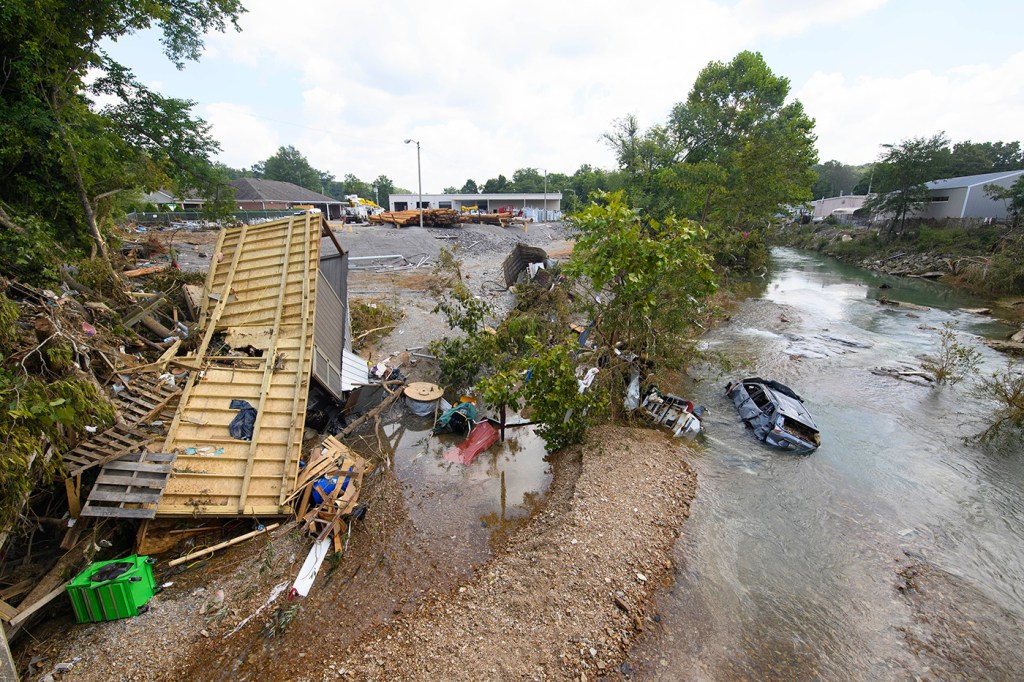With the help of Northeastern,
Tennessee Valley Authority experiments with a new forecast model to better predict extreme rainfalls

In collaboration with a Northeastern researcher, the Tennessee Valley Authority this summer plans to test an AI-generated weather forecasting model to see if it will do a better job of predicting extreme rainfalls than traditional models.
With climate change creating more intense precipitation events and flash floods, “you need to have the information right away,” says Puja Das, a senior Ph.D. candidate in interdisciplinary engineering at Northeastern University’s Sustainability and Data Sciences Laboratory.
She says some existing models take four to six hours to generate forecasts, while others generate hourly predictions that aren’t all that accurate, providing wrong information about the intensity or location of the precipitation.
“Their performance is not up to the mark,” which doesn’t help warn the public about the potential for flash flooding such as a deluge in 2021 that killed 20 individuals in Waverly, Tennessee, Das says.
Her research project explores deep generative models that look at the past 90 minutes of high resolution radar data to generate new forecasts every 10 minutes within a three-hour period.
Das and other Northeastern researchers, including her collaborator August Posch at Northeastern’s Institute for Experiential AI, traveled to Knoxville, Tennessee last year to present the NASA-funded project, called RAIN for Remote-sensing data driven Artificial Intelligence for precipitation-Nowcasting at TVA headquarters.
“They are happy with the results that we are getting,” Das says.
The TVA decided to use the physics-embedded AI-based model to see how it performs during extreme weather events this summer, she says. “Very soon we will have test results from real life, real-time incidents.”
Featured Posts
The TVA “needs accurate precipitation forecasts to inform dam operators and river managers,” says Auroop Ganguly, Northeastern distinguished professor of civil and environmental engineering, who is supervising Das’ thesis.
“They’re looking for better forecasts for their operational needs to be able to inform flood emergency and hydropower managers,” he says.
The TVA is the largest public power company in the U.S. Through a system of dams, it manages the nation’s fifth-largest river system in a terrain prone to flooding.
Every year or so, Tennessee and neighboring Kentucky see dangerous floods that not only threaten lives but also cause economic damage, Ganguly says.
The physics-based model introduced by NOAA 10 years ago, High Resolution Rapid Refresh (HRRR), no longer suffices during a time of increasing rapid and extreme events, he says.
In the case of the Waverly flood three years ago, meteorologists predicted two to three inches of rain. But 21 inches fell on Aug. 21, 2021, sweeping away cars, homes, businesses, pets and people, including 7-month-old twins.
Das says NowcastNet, a pre-trained physics-based deep generative model, takes just three to four minutes to run the forecasting model to generate new forecasts, whereas HRRR provides hourly forecasts.
“It’s not going to be a huge task for (the TVA) to implement this model,” she says. “You can just use your existing data. You don’t have to download anything extra for this.”
Das says RAIN incorporates deep learning models from Google’s DeepMind and physics-embedded enhancements called NowcastNet from Tsinghua University in Beijing and Michael I. Jordan’s lab at the University of California at Berkeley.
The models use publicly available data from NASA and NOAA’s weather radar system, she says, adding that she is sharing algorithms and helping the TVA customize the programs for its needs.
Das expects the information provided by RAIN to the TVA this summer will open the possibility of making more timely decisions about management of dams and hydropower stations during extreme rain events. As a first step, she says, the TVA has agreed to evaluate RAIN implementations on their operational system.
“The next steps would be to more functionally integrate the AI model into TVA river operations,” says Michael Hicks, water resources engineer at the TVA’s River Forecast Center.
“TVA would do this by utilizing it as an awareness tool that could reduce the detection and response times to extreme rainfall events,” he says. “Improvement in the forecasting of extreme events could lead to better detection and shorter response times for river system operators.”










